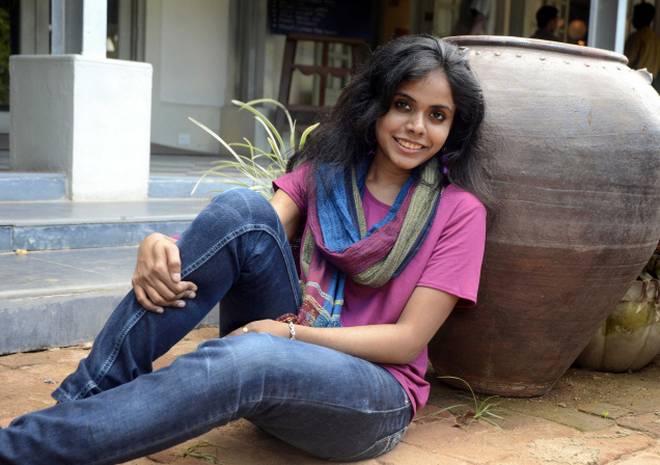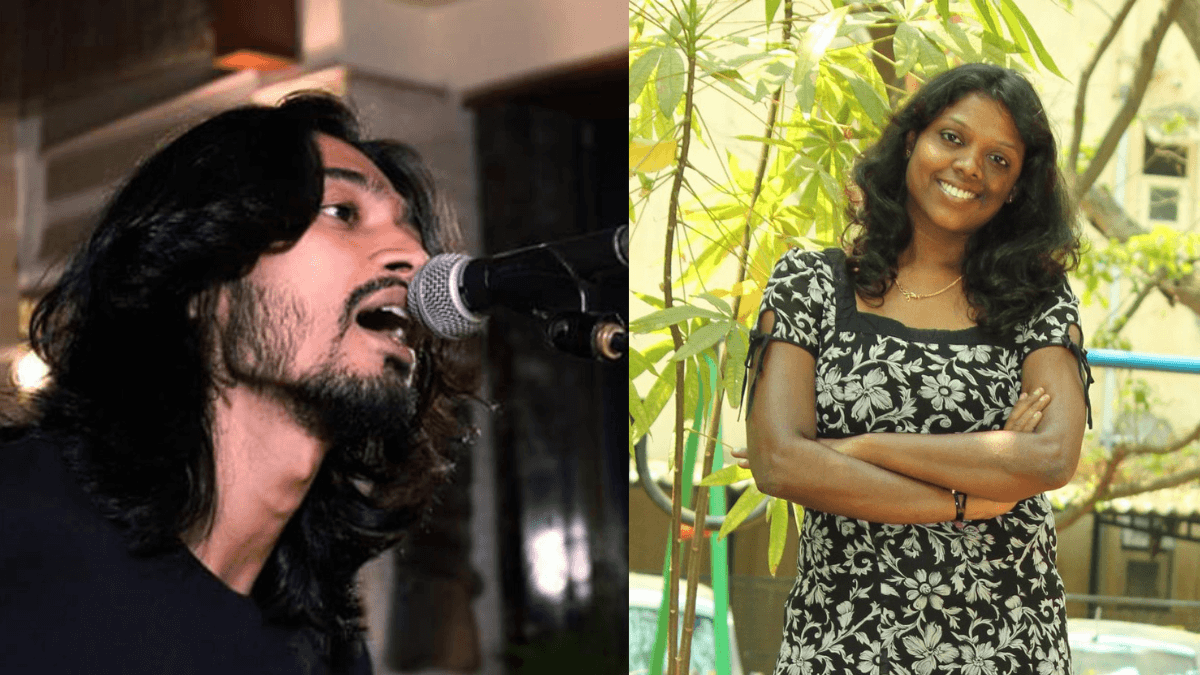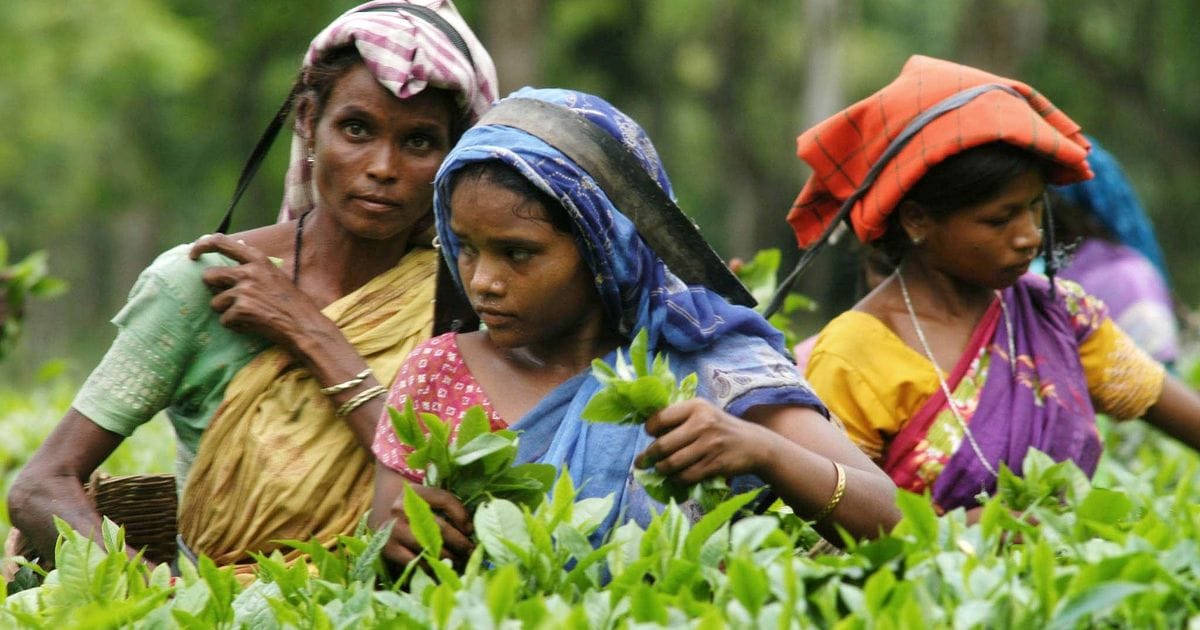Meena Kandasamy and her poetry embody a long withstanding fight against the stringent subjugation and atrocities undergone by the non-dominant caste community. While her poetry revolves around issues of caste, sexuality, political agendas, violence, gender oppression and language, her work mainly urges her readers to act.
Active resistance or revolutionary activism, the discourse which seeks to analyze what needs to change and set it right, is the core theme of Kandasamy’s raw and outrightly unbridled poetry, “full of jagged edges” (Duarte). Hailing from a caste-conscious background, her poetry reflects a society that grants inhuman sanction to caste discrimination and violence on Dalits.
Kandasamy uses her poetry as a means of violent resistance against the nationally ingrained and prevalent system of caste which enables dominant caste people to subjugate the non-dominant caste persons. The title of her first anthology Touch reiterates the most inhuman of stigmas attached to Dalits – their very touch being considered polluting. Kandasamy’s poem Touch voices her sentiments towards the predicament of her community set by the starkly biased and hypocritical Hindu Brahmanical system:
But, you will never have known
that touch—the taboo
to your transcendence,
when crystallized in caste
was a paraphernalia of
undeserving hate. (36-41)
Kandasamy ridicules the ancient encoded Brahmanical caste hierarchies that go against the celebrated non-dualism of Hinduism by pointing out the binaries of the “untouchable” and hence, touchable created by Indian society.
Active resistance or revolutionary activism is the core theme of Kandasamy’s raw and outrightly unbridled poetry.
She points out the inception of the caste system in Hindu mythology in her much-acclaimed poem Eklaivaan where Dronacharya refuses to teach Eklavya. Dronacharya discriminates against teaching him in order to teach the Kshatriyas. Kandasamy critically comments upon this casteist practice soldered in mythical validation through this poem.
She states: “You don’t need your right thumb, / To pull a trigger or hurl a bomb” (Kandasamy, Touch 7-8). Her poetry voices out her resentment against the very core of the caste system which according to Gandhi, was the “genius of the Hindu society”. Her scathing rebuke of Gandhi and his ideals is well reflected in her poem Mohandas Karamchand.
Her second anthology Ms. Militancy (2010) is flavoured with an experienced wisdom of the gendered and caste-based issues prevalent in society. These poems portray the “twice Dalit” state of Dalit women. They speak against the prevalent structures, ancient conventions and customs which have been and still are used for repeated subjugation. Kandasamy attempts to deconstruct the idea of Western Feminism which tries to universalize the female experience.
Apart from asserting her varied cultural and social identities, Kandasamy works at subverting them through poetry. She takes images of female characters from existing male literature and reconstructs them to portray an alternative image of them. In her introduction to Ms. Militancy, she writes, “My Maariamma bays for blood. My Kali kills. My Draupadi strips. My Sita climbs onto a stranger’s lap. All my women militate. They brave bombs, they belittle kings. They take on the sun, they take after me” (Kandasamy 9).
The title poem of her anthology Ms. Militancy is named after the revolutionary female character of Kannaki in the classic Tamil text Silapathikaram. Kannaki, though initially portrayed as a subject of patriarchy in the play, towards the end symbolizes female revolution of such intensity that Kandasamy places her as the epitome of the revolt she seeks to see in the female Dalit persona. She articulates: “Vending vengeance, she made a bomb of her left breast and blew up the blasted city” (Kandasamy, Ms. Militancy 21-22).
Also Read: Book Review: When I Hit You, Or, A Portrait Of The Writer As A Young Wife
Kandasamy’s poems Princess-in-exile and Traitress reflect the two very extremes of feminine existence hitherto portrayed, through the characters of Sita and Shurpanakha. In Random access man, Kandasamy deconstructs the idea of the “pure” Sita by portraying her as always physically and emotionally deprived by her husband. Her dissatisfied Sita sent her husband to “Get me the testicle of a golden deer… So that we can rouse your manhood” (12-13).
Kandasamy’s portrayal of Shurpanakha takes the image of women a step ahead. Shurpanakha is said to have been “Widowed, forsaken, and ordered to exist in erasures” (1). Having been a lustful woman who wooed Ram and Lakshman, the necessity of having her punished for her desires by patriarchy is reflected by them.
Critics claim to read tinges of ‘hysteria’ in Kandasamy’s poetry. Kandasamy states, “Society will not let angry young women exist, we will be labelled hysterics” (22). Women aren’t allowed to rebel or rage. If they do, they are tagged as hysterical. This fiercely biased view of patriarchy which has hitherto silenced women from expressing their stark resentment towards prevalent ideologies is challenged by each of Kandasamy’s female protagonists in the poems of Ms. Militancy.
In many of her poems, time and again, we see her offering the written word or rather poetry as a source of deliverance to Dalit women. In Nailed, her famous line: “Men are afraid of any woman who make poetry / and dangerous Portents” (1-2), we see her trying to propagate feminism through words and the act of writing. Writing comes across as a means of deliverance and protest for her.
Unlike mainstream literature, Dalit literature is dedicated to developing a consciousness among the non-dominant caste people and instigating them to act against their oppressors. Her discontent with the essentialization of culture and the very project of nationalism ruptures the texture of her poetry.
Kandasamy uses her poetry as a means of violent resistance against the nationally ingrained and prevalent system of caste.
Kandasamy’s attempt to bring out an alternate version of feminist poetry to give independence to the voices of non-dominant caste women strikes a parallel with the final phase of Gynocriticism. The very notion of the ‘body’ of the third world woman, especially the underprivileged woman bring it closer to the postulation of the “subaltern” in Spivak’s essay Can the subaltern speak? (1985).
Spivak points out the threefold oppression faced by these women i.e. patriarchy, race and domination by first world feminists. Spivak asserts that the “subaltern” should favour to write their own body and stories. Kandasamy’s attempts to dig out the inscribed voices from history and to reread them retrieves the diffusive traces of suffering and pain which are often overshadowed by the facade of empathy shown by the dominant existing socio-political discourse. Meena Kandasamy tries to problematize this camouflaged circulation of power through her intensely inquisitive poetry.
Kandasamy’s poetry, in a way, materializes her urge to express and fight for non-dominant caste women: their desires, dreams, independent views and speak for themselves rather than always be spoken for or of by the existing patriarchal social order and their male counterparts. Her poem Aggression envisions a possibility of resistance and an ensuing rebellion against the prevalent injustices in society. This spirit of rebellion resonates through the poem:
Ours is a silence
that waits. Endlessly waits
… But sometimes,
the outward signals
of inward struggles takes colossal forms
And the revolution happens because our dreams explode (1-2,7-10)
She uses the symbol of the vindictive female body as a means of defiance and confrontation against the patriarchal subjugation of women. She proves that the Dalit woman can absolutely speak and when she does, her writing proves to be so scathingly powerful that it comes to formulate itself as an elaborate yet blatant tool of political dissent. This emboldened writing of Meena Kandasamy topples the world of Indian women’s writing by setting a distinctly defiant standard in the world of feminist poetics.
Also Read: Meena Kandasamy’s ‘Ms Militancy’ And Its Poems Of Resistance
References:
Calvino, Italo. “Right and Wrong Political Uses of Literature”, Literature in the Modern World: Critical Essays and Documents, ed. Dennis Walder. New York: Oxford UP, 2004. 114. Print.
Deva Sudha. “Out of the Cocoon: An Analysis of the Select Poems of Meena Kandasamy.” To Terabithia. N.p., 25 July 2012. Web. 20 Oct. 2016.
< http://devasudha26.blogspot.in/2012/07/out-of-cocoon-analysis-of-select-poems.html>
Dhingra, Kanupriya. “‘Come, Unriddle Me’- Reality of the Dalit Feminine Self in Meena
Kandasamy’s Ms. Militancy.” Lapis Lazuli- An International Literary Journal 5.2 (2015): 45-58. Print.
Duarte, Silvia. “Meena Kandasamy: Angry Young Women Are Labelled
Hysterics.” Sampsonia
Way Magazine RSS. N.p., 22 Sept. 2010. Web. 11 Nov. 2016.
< http://www.sampsoniaway.org/literary-voices/2010/09/22/meena-kandasamy-angry-young-women-are-labelled-hysterics/>
Foucault, Michel. The History of Sexuality. London: Penguin, 1990. Print.
Gilbert, Sandra M., and Susan Gubar. The Madwoman in the Attic: The Woman Writer and the Nineteenth-century Literary Imagination. New Haven: Yale UP, 1979. Print.
Irigaray, Luce. Sexes et parentés, Editions de Minuit, 1987. Print.
Jackson, Elizabeth. Feminism and Contemporary Indian Women’s Writing. Palgrave Macmillan, 2010. Print.
Kandasamy, Meena. Ms. Militancy. Navayana, 2010. Print.
—. Touch. Mumbai: Peacock, 2006. Print.
Woolf, Virginia. A Room of One’s Own. Mariner Books; 1st Harvest/HBJ Edition: 1989
edition. Print.
Jerin Jacob is an ardent literature and languages enthusiast and swears by the power of words changing lives and creating change. A firm believer in writing based and art driven activism, she uses education as a means to propagate social change. She can be followed on LinkedIn, Facebook, Twitter and Medium.
Featured Image Credit: The Hindu




